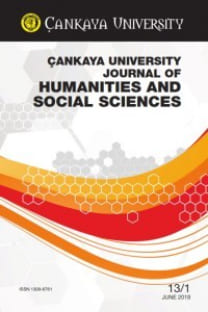Self-Reflexive Metafictional Games in The Life and Opinions of Tristram Shandy
ANAHTAR KELİMELERüst-kurgu, kendini yansıtma, Tristram Shandy, geleneksel roman, realizm
Self-Reflexive Metafictional Games in The Life and Opinions of Tristram Shandy
-,
___
- Alter, Robert. (1975). Partial Magic: The Novel as a Self-Conscious Genre, (Berkeley: University of California Press).
- Barthes, Roland. (1977). “The Death of the Author” [translated by S. Health] in Image--Music—Text, (New York: Hill and Wang).
- Patricia Waugh, Metafiction: The Theory and Practice of Self- Conscious Fiction (New York: Methuen, 1984), p.3.
- Robert Siegle, The Politics of Reflexivity (London: Hopkins UP, 1986), p.3.
- Booth, Wayne. (1992). “The Self Conscious Narrator Comic Fiction before Tristram Shandy” in M. New (ed.), Tristram Shandy, (London: Macmillan).
- Federman, Raymond. (1993). Critifiction: Postmodern Essays, (New York: New York Press).
- Gass, William. (1970). Fiction and Figures of Life, (New York: Knopf).
- Holtz, William. (1970). Image and Immortality: A Study of Tristram Shandy, (USA: Brown University Press).
- Hutcheon, Linda. (1985). Narcissistic Narrative: The Metafictional Paradox, (London: Methuen Ltd.).
- Jefferson, D.W. (1992). “Tristram Shandy and the Tradition of Learned Wit” in Melvyn New (ed.), Tristram Shandy (London: Macmillan).
- McCaffery, Larry. (1982). The Metafictional Muse, (London: Pittsburgh Press).
- Rizzo, Betty. (1989). ““How could you Madam, be so Inattentive?” Tristram”s Relationship with the Reader,” in Melvyn New (ed.), Approaches to Teaching Sterne”s Tristram Shandy, (New York: MLA).
- Scholes, Robert. (1980). Fabulation and Metafiction, (Chicago: University of Illinois).
- Shklovsky, Victor. (1965). “Art as Technique” in Lee T. Lemon and Marion J. Reiss (eds.), Russian Formalist Criticism: Four Essays, (Lincoln: Lemon and Resis).
- Siegle, Robert. (1986). The Politics of Reflexivity, (London: Hopkins UP).
- Sterne, Laurence. (1996). The Life and Opinions of Tristram Shandy, (London: Wordsworth).
- Sukenick, Ronald. (1969). The Deathn of the Novel and Other Stories, (New York: Dial Press).
- Williams, Jeffry. Theory and the Novel: Narrative Reflexivity in the British Tradition, (UK: Cambridge UP).
- Whittaker, Ruth. (1988). Tristram Shandy, (Philadelphia: Open University Press).
- Waugh, Patricia. (1984). Metafiction: The Theory and Practice of Self- Conscious Fiction, (New York: Methuen).
- ISSN: 1309-6761
- Yayın Aralığı: Yılda 2 Sayı
- Başlangıç: 2004
- Yayıncı: Çankaya Üniversitesi
The L2 Production of English Comparative Structures: More Support for L2 Developmental Changes
The Self-Revelatory Tendencies of The Pardoner in the Canterbury Tales
Reading Through Pictures: The Lion, the Witch and the Wardrobe
Elements of Translation Acceptabilitiy
Fateme ARAGHI, Mostafa RAMEZANPOOR
Writing Down the War: The Child's Perspective
